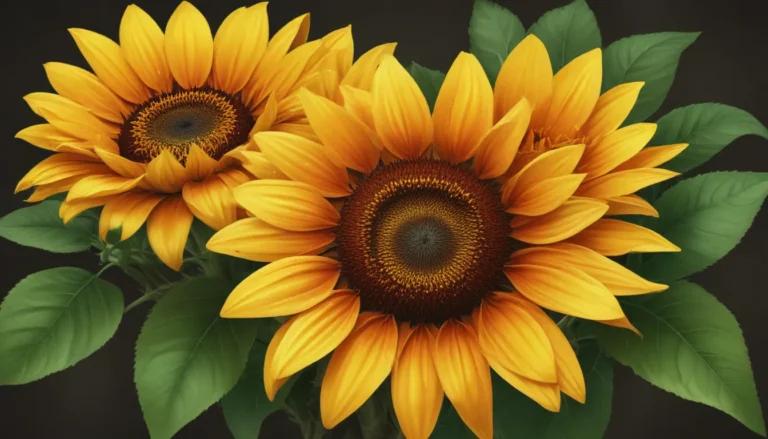The pictures we use in our articles might not show exactly what the words say. We choose these pictures to make you interested in reading more. The pictures work together with the words but don’t take their place. The words still tell you the important facts.
Are you ready to delve into the enchanting realm of Sugarbush Protea? This resilient and vibrant plant, native to South Africa, has captured the hearts of plant enthusiasts and flower lovers worldwide. Known for its striking appearance and captivating qualities, Sugarbush Protea has become a favorite in gardens, floral arrangements, and even weddings. Whether you're a novice plant enthusiast or a seasoned green thumb, the 20 fascinating facts about Sugarbush Protea that we're about to uncover will surely spark your curiosity and deepen your appreciation for this stunning flower. So, let's embark on this journey and unravel the wonders of Sugarbush Protea together!
The Vibrant World of Sugarbush Protea
From its origins in South Africa to its symbolic significance and versatile uses, Sugarbush Protea is a plant filled with captivating features that are sure to mesmerize you. Let's explore these fascinating facts in more detail:
Origins and Characteristics of Sugarbush Protea
- Native to South Africa: The Sugarbush Protea, also known as Protea repens, hails from the Western Cape region of South Africa, thriving in the fynbos biome.
- Extensive Species: With over 330 different species in the Protea family, each displaying its distinct characteristics and vibrant colors, Sugarbush Protea is truly diverse.
- Eye-Catching Flower Heads: The large, bold flower heads of Sugarbush Protea are composed of a cluster of long, slender florets that create a stunning display of color and texture.
- Vibrant Colors: From shades of red, pink, orange, to yellow, Sugarbush Protea offers a dazzling array of hues to brighten any garden or floral arrangement.
- Symbol of Strength and Diversity: In South African culture, the Protea flower symbolizes resilience and the ability to thrive in challenging conditions, making it a powerful emblem of strength and diversity.
Cultivating Sugarbush Protea
- Low-Maintenance Plant: Once established, Sugarbush Protea requires minimal care, making it an ideal choice for both experienced and novice gardeners.
- Well-Drained Soil: Thriving in sandy, acidic soil that is well-draining, Sugarbush Protea avoids waterlogged roots.
- Sun-Loving Plant: Flourishing in full sun and bright, direct sunlight, Sugarbush Protea is perfect for gardens with ample sun exposure.
- Drought-Tolerant: Adapted to dry conditions, Sugarbush Protea can withstand periods of drought with minimal watering once established.
The Enchanting Beauty of Sugarbush Protea
- Unique Flower Structure: The cone-shaped flower heads of Sugarbush Protea set it apart from other flowering plants, adding an architectural interest to gardens and floral arrangements.
- Long Vase Life: Cut Sugarbush Protea flowers can last up to two weeks in a vase, allowing you to enjoy their beauty and elegance for an extended period.
- Wildlife Magnet: The nectar-rich blooms of Sugarbush Protea attract a variety of bird species, bees, butterflies, and other pollinators, infusing life and activity into the garden.
- Butterfly Attraction: Highly attractive to butterflies, Sugarbush Protea is a delightful addition to butterfly gardens and pollinator-friendly landscapes.
Versatility and Adaptability of Sugarbush Protea
- Popularity in Floral Arrangements: Widely sought after for floral arrangements worldwide, Sugarbush Protea's long-lasting blooms and striking appearance make it a popular choice among florists.
- Container Growth: Due to its compact size and adaptability, Sugarbush Protea can be successfully grown in containers, catering to those with limited garden space.
- Wind Tolerance: With sturdy stems and resilient nature, Sugarbush Protea can withstand windy conditions, making it suitable for landscapes in windy regions.
Conservation and Appreciation of Sugarbush Protea
- Endangered Varieties: Some species of Sugarbush Protea are endangered due to habitat loss and over-harvesting, emphasizing the importance of conservation efforts.
- Visual Appeal: Even when not in bloom, the foliage of Sugarbush Protea remains visually appealing with its leathery, serrated leaves, adding texture to garden beds.
Embracing the World of Sugarbush Protea
After immersing ourselves in the wonders of Sugarbush Protea, it's clear that this plant is a true marvel of nature. From its distinctive flower heads to its resilience in challenging conditions, Sugarbush Protea is a plant that continues to captivate and inspire. Whether you're looking to enhance your garden with vibrant colors and unique shapes or add a touch of elegance to your floral arrangements, Sugarbush Protea is an excellent choice.
Conclusion: Embracing Nature’s Beauty
As we conclude our exploration of Sugarbush Protea, let's not forget the importance of conservation and appreciation for the natural world around us. By understanding and valuing the wonders of plants like Sugarbush Protea, we can become better stewards of the environment and ensure the preservation of these magnificent species for generations to come.
So, why not embrace the remarkable world of Sugarbush Protea? Explore its diverse species, support conservation efforts, and revel in the beauty and diversity that these magnificent plants have to offer. The journey of discovery awaits, filled with vibrant colors, captivating shapes, and a newfound appreciation for the wonders of nature.
FAQs: Unveiling More Insights
- What is a Sugarbush Protea? Sugarbush Protea is a flowering plant native to South Africa, known for its large, showy flower heads and distinctive foliage.
- How tall do Sugarbush Protea plants grow? The height of Sugarbush Protea plants can vary, ranging from 3 to 6 feet on average, with some species reaching up to 10 feet in height.
- Do Sugarbush Protea plants require special care? While relatively low-maintenance, Sugarbush Protea plants prefer well-draining soil, ample sunlight, and minimal fertilizer, requiring protection from frost in colder climates.
- Can Sugarbush Protea be grown in containers? Yes, Sugarbush Protea can thrive in containers with proper care and adequate space for root development.
- Are Sugarbush Protea endangered? Some species of Sugarbush Protea are endangered due to habitat loss and over-harvesting, emphasizing the need for conservation efforts.
- Can Sugarbush Protea be used in flower arrangements? Widely used in floral arrangements for their striking appearance and long-lasting blooms, Sugarbush Protea is an excellent choice for adding interest and texture to bouquets.
Embark on the enchanting journey of Sugarbush Protea, filled with beauty, diversity, and a newfound appreciation for the wonders of nature. Let its vibrant colors, unique flower structures, and resilience inspire you to embrace the remarkable world of plants and conservation. As we continue to explore and learn from the natural world, let us cherish the beauty and diversity that surrounds us, ensuring a greener, more vibrant future for all.






